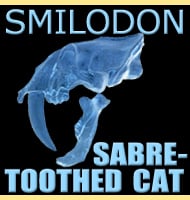Daphoenus
In Depth Although no way near as popular as the large ‘bear dogs’ such as Amphicyon, the large number of fossil remains for Daphoenus actually make it one of if not the best represented of the North American bear dogs. Daphoenus is actually the type genus of a special sub group of amphicyonids called the … Read more
